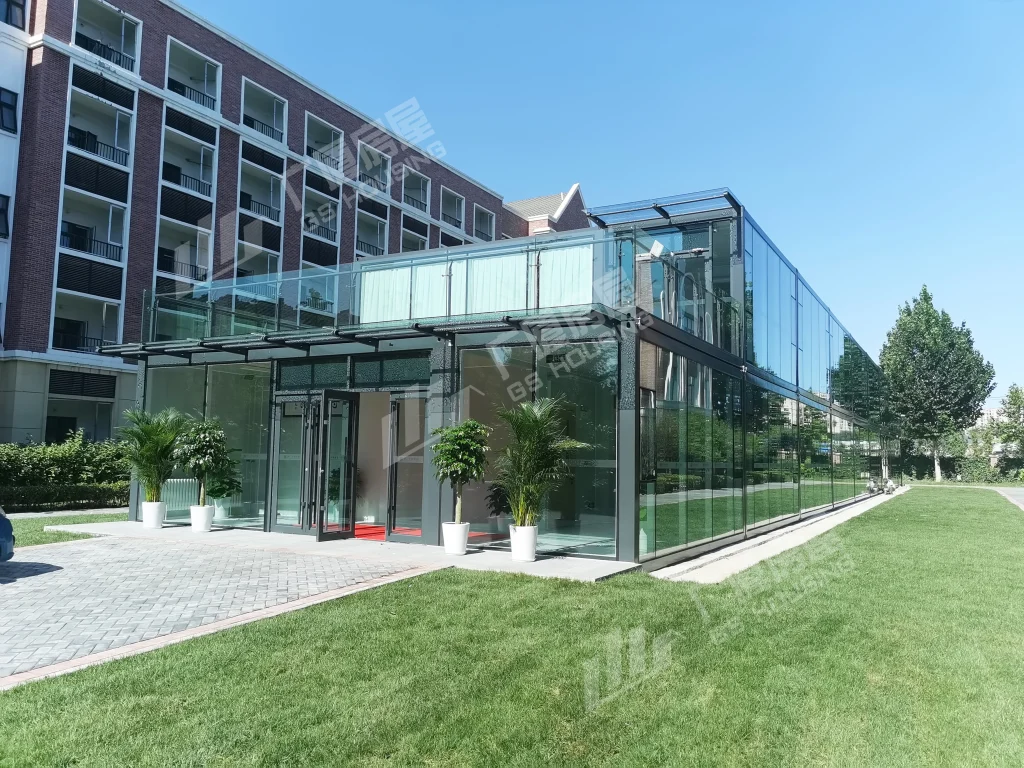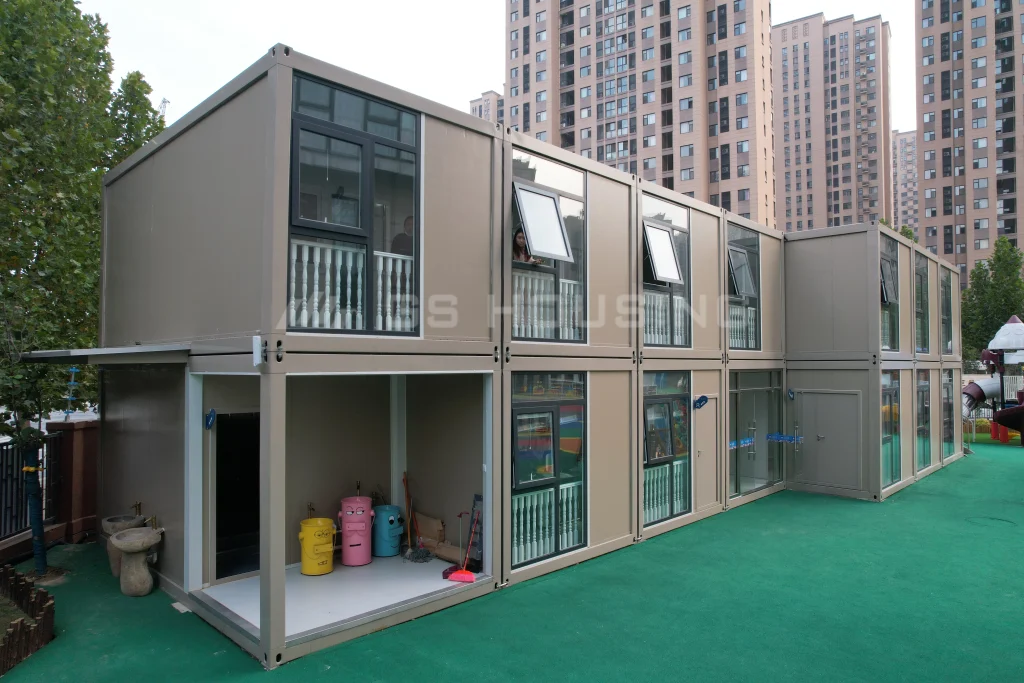From Boxes to Smart Spaces: How Flat-Pack Container Classrooms Transformed Since 1966
From Boxes to Smart Spaces: How Flat-Pack Container Classrooms Transformed Since 1966
Introduction
In the 1960s, many schools in the U.S., Australia, and parts of Asia faced a problem. Student numbers were growing quickly, but permanent buildings could not keep up. To solve this, schools turned to simple prefabricated rooms. Some were made from wood panels, others were converted shipping containers. They were plain, had little insulation, and often felt temporary. Still, they gave schools extra space when it was badly needed.
Today the picture looks very different. Flat-pack container classrooms are no longer simple boxes. They are safe, durable, and even fitted with smart technology. They match or sometimes exceed traditional buildings. Companies like GS Housing, with projects across China, the Middle East, and Africa, have played a big role in this change. This article looks at the journey of container classrooms from the 1960s to today’s smart and sustainable spaces.

1960s–1970s: Early Days of Container Classrooms
First modular trials
California’s School Construction Systems Development (SCSD) program (1961–1967) was one of the first big modular projects. It used standard walls, ceilings, and systems so schools could be assembled quickly. The idea was good, but costs grew and results were uneven. Teachers often felt the spaces were too temporary. Even so, SCSD showed that modular classrooms were possible.
Shipping containers as classrooms
At the same time, shipping containers began to be reused as schoolrooms. Population growth after World War II made fast solutions necessary. Containers were strong, easy to transport, and available worldwide. With simple changes—windows, doors, basic insulation—they became classrooms in Africa, South Asia, and Latin America. These units were expected to last a few years, but many stayed for decades. They proved the usefulness of containers as learning spaces.
1980s–1990s: From Temporary to Long-Term
Becoming part of the system
By the 1980s, it was clear that container classrooms were not going away. In Los Angeles, for example, about 30% of classrooms were portables or containers. Other countries also kept using them because permanent building funds were limited. What started as a stopgap became a long-term part of schools.
Problems with comfort and safety
But weaknesses were obvious. Thin walls gave poor temperature control. Ventilation was weak, which raised CO₂ levels. Steel roofs made noise in heavy rain. Air conditioning or heating units were often loud. In some places, low-cost materials contained chemicals like formaldehyde. Studies linked these issues to student discomfort and distraction. Schools realized that better design and materials were needed if container classrooms were to stay.
2000s–Today: Flat-Pack Container Classrooms Mature
With the 21st century came a new type of container building: the flat-pack system. Unlike old converted shipping containers, these were designed from the start as modular classrooms.
1. Quick setup and flexible scale
Flat-pack classrooms are built from standard parts: top and bottom frames, corner posts, and wall panels. These are made in factories and shipped flat. Once delivered, they are lifted into place and connected.
- A single classroom can be ready in 2–4 weeks.
- Whole school blocks can be finished in months.
Because the system is modular, schools can add more classrooms later or stack units up to three floors high. This makes them useful for cities where land is limited.
2. Strong and safe
Modern flat-pack classrooms are built for long use. GS Housing units use galvanized steel, non-combustible insulation, and graphene coating that prevents rust for up to 20 years. Their products are tested to resist 8.0 earthquakes and 12-grade typhoons. This level of safety is far beyond what the first container classrooms offered.
3. Green and efficient
Factory production cuts waste by up to 70% compared to normal building sites. Walls and panels keep heat in and out, lowering energy use. Solar panels, LED lights, and rainwater systems can also be added. In Shenzhen, GS Housing built schools with full climate control and low-energy ventilation. These buildings look permanent but can still be moved if needed.
4. Smart classrooms
Flat-pack units now support digital learning. Many are built with:
- Wi-Fi and ICT wiring.
- Interactive boards and projectors.
- Acoustic panels and natural daylighting.
- Sensors that track air quality and adjust ventilation.
This is a major shift from the simple “steel box” of the past. Students today walk into bright, modern, and connected spaces.
GS Housing: From Local Schools to Global Projects
GS Housing has become a leading supplier of flat-pack classrooms, with more than 20 years of experience.
- China projects: In Hebei, Henan, and Shenzhen, GS Housing delivered modular schools and kindergartens. In Shenzhen’s Guangming High-Tech Zone, one modular school cut the schedule by two-thirds and reduced construction waste by 75%.
- Saudi Arabia – NEOM: For the NEOM mega project, GS Housing provided 4,480 flat-pack units, including classrooms and supporting facilities. The units were shipped from China and assembled quickly on-site.
- Africa and beyond: In several African countries, NGOs and local governments worked with GS Housing to set up container schools. These projects gave children access to education in remote or disaster-hit areas.
These examples show how flat-pack classrooms work for both city schools and global mega-projects.

The Future: Toward Smart, Sustainable Schools
Looking ahead, container-based classrooms will continue to evolve.
- Smart campuses: IoT devices will help track energy use and air quality. Students could even see real-time data as part of lessons on science and sustainability.
- Reuse and mobility: When schools move or populations change, flat-pack units can be taken apart and reused elsewhere.
- Worldwide adoption: Governments in Asia, Africa, and the Middle East already see flat-pack classrooms as a strategic tool to meet education needs quickly and at lower cost.
As countries push for net-zero campuses, modular flat-pack schools will grow even more important. They deliver speed, quality, and a lower carbon footprint.
Conclusion
The journey from the basic container classrooms of the 1960s to today’s flat-pack modular classrooms shows how much has changed. Early units were plain and temporary. Modern units are permanent-quality, safe, and smart. They are green, efficient, and ready for technology.
For schools and governments, flat-pack classrooms are now more than an emergency fix. They are a long-term strategy for building better education spaces. For GS Housing, every project is not just about delivering a building. It is about shaping the future of learning, one container module at a time.
FAQs
Q1. Are today’s flat-pack classrooms permanent?
A: Yes. With steel frames, fire-safe insulation, and anti-rust coatings, they last 20 years or more with proper care.
Q2. How long does it take to install one?
A: A standard unit can be built in 2–4 weeks. Larger projects take a few months, but this is still much faster than normal building.
Q3. Do they meet safety and green standards?
A: Yes. Reputable suppliers like GS Housing follow strict codes for fire, seismic safety, and health. Many schools also include solar systems and smart energy features.



